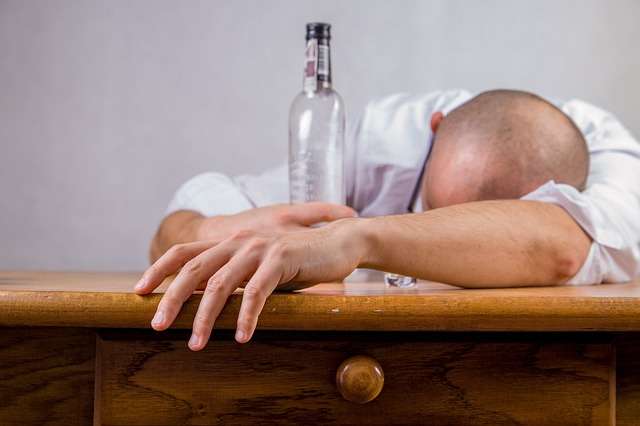Understanding Alcoholism
Alcohol use disorder (AUD), sometimes addressed as alcoholism, has three levels in a medical diagnosis: mild, moderate, or severe. Even at a mild to moderate level, medical intervention is helpful in reducing or eliminating uncontrolled problematic drinking issues. For some of us, a drinking problem can creep up on us if we are experiencing painful events, such as a loss of a beloved family member who was an integral part of the family for many years. Life has suddenly changed when we can no longer see them every day in our household. The loss can be excruciating, to the point that we look for ways to ease that physical pain of permanent loss through applied substances (drugs, alcohol).
Any of us, working in any industry, could be vulnerable to the repercussions of life’s events. Athletes who work and train hard on a daily basis may turn to drinking alcohol at the end of the day, or after a game (football, tennis, baseball, etc.), just so they can wind down enough to go to sleep. Then there are the groups who get together from time to time, and party late into the morning hours. Binging on alcohol becomes a regular activity during these parties and, depending on the genetic chemical makeup of these athletes, some will begin abusing alcohol on a regular basis.
Strict working conditions and the need to achieve perfection in physical output are part of any athletic activity, especially when it is at a professional level. While most athletes do not (hopefully) indulge before or during a sports event, several may choose to drink after the event is over. Even so, drinking after the event can hamper the needed time to regenerate the body back to its proper working levels that define the professional performance of athletes.
If the athlete does not rest enough or eat properly to rejuvenate the body for the next game, the athlete becomes dehydrated or lacks suitable energy to perform at optimal levels as usual. When athletes continue to drink more and more, the physical chemistry changes, affecting digestion which causes nutritional deficiencies, changes hormonal levels and brain cell thinking patterns, and can also negatively affect the immune system. Getting a full night’s sleep becomes more difficult, exacerbating the situation even further.
Reduced Inhibitions, Risky Behavior
Drinking can lead to lower inhibitions, especially for those who, normally, are timid around more than one person. Introverted people drink during social occasions so they can relax enough to engage in conversations with other people. Others prefer to drink alone at home, isolating themselves from those who might ask annoying personal questions. For people who go to bars and drink while also looking for people to talk with, more drinking takes place the longer someone hangs around.
Bars and nightclubs are notorious as places to pick up others for a one-night stand, but such events can lead to dangerous situations. There is the risk of acquiring sexually transmitted diseases, being assaulted, and being robbed. Women run the risk of attaching themselves to what could be the latest mass murderer of young females in the county.
In group settings of young impressionable men, such as gangs, a leader encourages others to engage in unlawful behavior, such as raiding a car lot for parts or stealing a car. A young man n society can feel isolated, especially if the family situation is an unhappy one. Finding a place in a group that feels like the family the young man always hoped for, gives the young man a sense of purpose and belonging. However, living this way eventually leads to the inevitable outcome of incarceration or death.
Getting Help With Treatment Programs
When a person is diagnosed with AUD and depending on the three stages of mild, moderate, or severe, the patient with mild symptoms can enter into an outpatient alcohol treatment (San Diego) program. This means the patient will still live at home but attend treatment sessions, as scheduled by the center. A patient recovering from AUD, who has completed most of their program, becomes an outpatient when dismissed, but must return for scheduled follow-up meetings and further treatments.
With moderate or severe symptoms, a patient can enter as an inpatient in a treatment program that involves a uniquely designed treatment, based on a full body and mental health assessment. AUD patients fall under the dual diagnosis level of treatments, which includes going through a detox session with supervision from the center’s medical staff. Drugs and counseling are provided to ease the transition away from drinking alcohol during this time.
Comprehensive mental health counseling continues after the detox session is completed, which helps with assisting the brain to protect the patient against trigger events that might cause relapses. Other positive outcomes are engaging the patient in enjoyable activities although the patient may have to try a few of them before finding that which they consider fun to do each day.
Exercise programs are also good for building up body strength and toning the muscular infrastructure from flabby to shapely. Exercise routines also encourage deeper breathing patterns which send more oxygen throughout the body and the brain. Patients feel healthier and energized in going about their daily routines.
For some patients, transcranial magnetic stimulation (TMS) provides a reactivation of underperforming brain cells by stimulating areas of the brain with applied electromagnets on the head. Patients prone to epilepsy, and seizures, who are pregnant, or who have body implants, are not always good candidates for this therapy.
Get Help Fast for Your AUD Issues
Most patients can plan to be inpatients in programs lasting 30, 60, or 90 days, but individual programs may require a different plan, unique to the patient. Pacific Bay Recovery can help you with any substance addiction and/or mental issue you might have so you can regain a happy and functional lifestyle again. Call us for a free consultation and to set up an appointment to start getting help as soon as possible. 619-350-8220.


